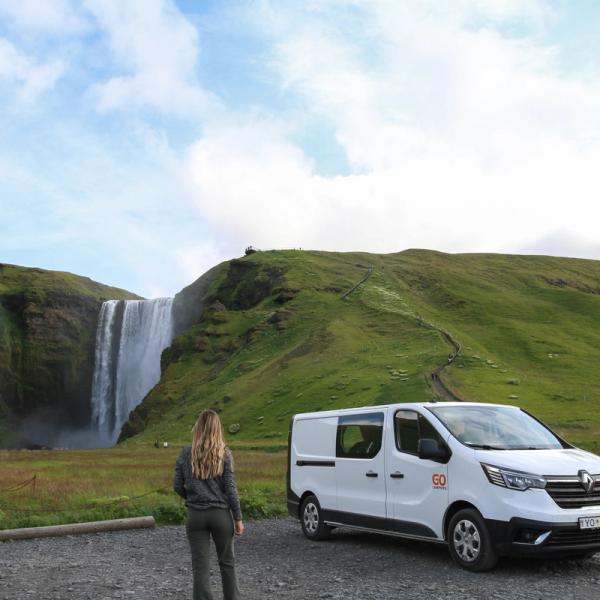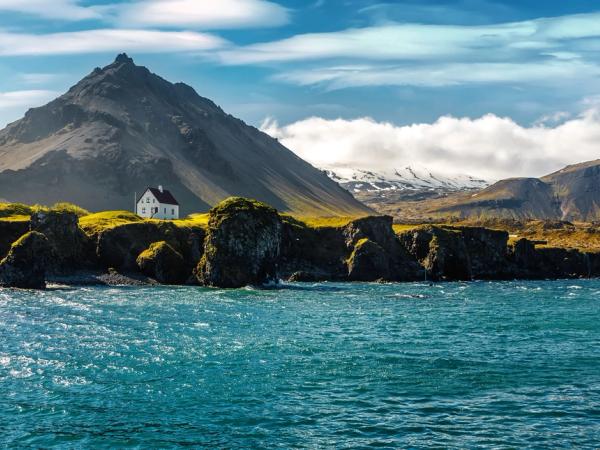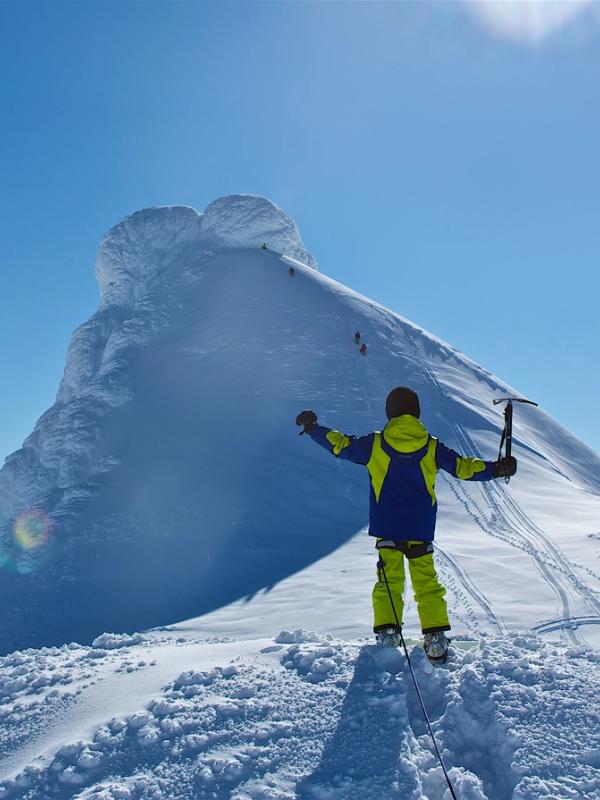
One of the most diverse areas in Iceland: Snæfellsjökull National Park
The diversity of landscapes and natural elements found in Iceland is unparalleled. Different forces have come together here to create a land that is difficult to classify. Every corner of the island is different, impressive, and some parts are like nothing you’ve seen before.
There’s a corner in West Iceland that showcases a bit of everything this country is known for. The Snæfellsnes Peninsula is often called “Iceland in Miniature” because it’s like a collection at a smaller scale of volcanoes covered by glaciers, dramatic cliffs, charming fishing villages, green meadows, and narrow canyons. And the star of this region is undoubtedly the amazing Snæfellsjökull National Park.
Join us as we explore this protected area, one of the country's top travel destinations. We’ll explain what to see and do there as well as where to stay with your campervan.
Key Takeaways
- Snæfellsjökull National Park, located in West Iceland, is one of the three national parks in the country.
- It’s the only national park in Iceland with both land and marine areas.
- The park gets its name from Snæfellsjökull, a glacier capped volcano.
About Snæfellsjökull National Park
Iceland has three national parks, each with extremely unique landscapes. Of the three, Snæfellsjökull National Park stands alone as the only one with both land and sea areas.
The park was established in 2001 and covers approximately 170 square kilometers at the western edge of the Snæfellsnes Peninsula, a stretch of land surrounded by the sea in West Iceland. The main natural feature inside the park is the glacier Snæfellsjökull, which gives the park its name. The meaning in Icelandic would be “glacier of the snowy mountain.” In fact, it’s a 1,446-meter (4,744 feet) stratovolcano crowned by a glacier. The volcano is now dormant, but was quite active in the past, and it shaped the area with its eruptions and glacial floods many millennia ago.
The glacier can be seen from every corner of the park. Well, it can even be seen from almost everywhere in the Snæfellsnes Peninsula. Its impressive presence has originated countless legends and stories, serving as inspiration for tales of elves and trolls, deeply rooted in Icelandic culture. One of the most important elements of folklore present in the Snæfellsnes Peninsula and Snæfellsjökull National Park is the story of Bárður Snæfellsás, a half-human, half-troll creature said to protect the region, who is believed to reside in the Snæfellsjökull mountain.
The Snæfellsnes Peninsula itself is a microcosm of the best things to see in Iceland. In a single day, you can walk on black sand beaches, peer into volcanic craters, and stroll through villages where time seems to have stopped. It’s an excellent location for a campervan adventure.
The park is best explored over a period of two to three days to fully immerse yourself in everything it has to offer. The park’s compact size and well-maintained roads make it easy to explore at your own pace, allowing you to stop wherever you want. And, luckily, there are several campsites on the peninsula where you can park your campervan and spend the night. It’s important to remember that free camping is forbidden not only inside the park, but all over Iceland.

What to See in Snæfellsjökull National Park
Here are just a few of the amazing natural attractions within the park.
Snæfellsjökull Glacier
As we were just explaining, this is the park’s crown jewel. The Snæfellsjökull glacier sits atop a volcano that has been dormant for nearly 2,000 years. Its icy slopes shine under the sun, and on clear days, you can see it even from Reykjavík, which is over 100 kilometers (60 miles) away. The mountain is surrounded by lava fields, a testament to the time when the volcano was active, creating a beautiful landscape that looks surreal, dotted with craters and volcanic caves. There are guided hikes that let you walk on the ice, seeing cracks and crevices from up close. The guides would share information and stories about this place.
Apart from the mystical and mythological tales associated with the Snæfellsjökull glacier, this mountain is also a place of literary fame. It’s where Jules Verne located the entrance to the underworld in Journey to the Center of the Earth.
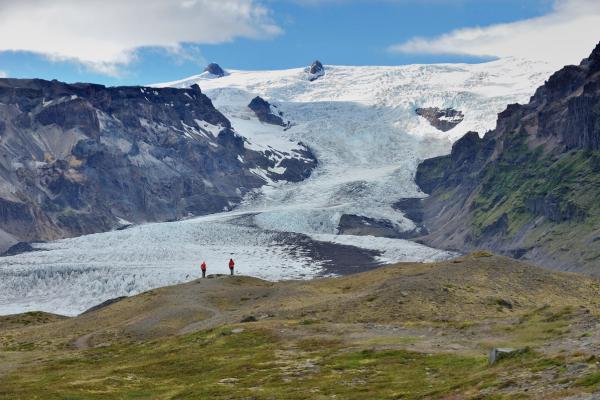
Lóndrangar
On the southern coast, the Lóndrangar cliffs offer a fantastic view. The most prominent features are the two basalt pillars that rise from the sea. They are the remnants of an ancient crater that has been eroded by the sea and the wind. The tallest of the two is 75 meters (246 feet) tall, while the other stands at 61 meters (200 feet). This part of the park is also steeped in folklore, as there are tales that say the two stone pillars are the remains of two trolls who were surprised by the sun and turned to stone.
The cliffs are also a great place for bird watching, with thousands of puffins and fulmars nesting here in the summer months. There’s a parking area connected to the cliffs by a short trail that leads to a viewing point. From there, you can see the waves crash against the rocks below.
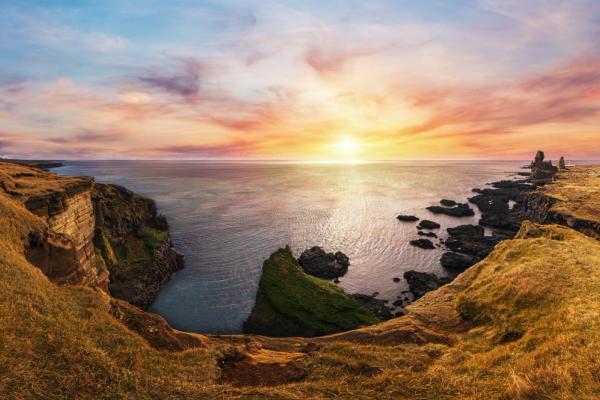
Djúpalónssandur Beach
This black pebble beach, framed by lava formations, feels like it was from another planet. Apart from its beauty, the beach also has some historical interest. In 1948, a British trawler wrecked off the beach, and parts of it ended up on Djúpalónssandur. The remains are still there, scattered on the pebbles. There’s a trail that goes from the beach to the cliffs of Dritvík, with fantastic views.
This place also has a connection with the culture of strength, which is deeply rooted in Iceland. As you walk along the shore, you'll come across four large stones. These stones were traditionally used to test the strength of fishermen, with each stone representing a different level of strength. Even today, visitors can try to lift them.
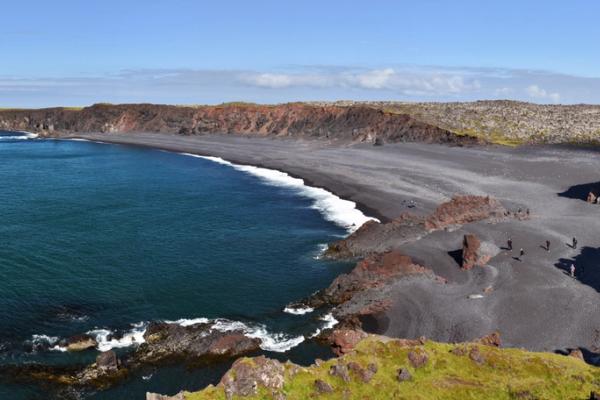
Vatnshellir Cave
Formed approximately 8,000 years ago by a volcanic eruption, Vatnshellir Cave is a 200-meter-long lava tube located near Malarrif. Guided tours cost around $45 and take you 35 meters underground, where stalactites and other lava formations glow under the light. It’s highly recommended to book these tours in advance, as they can fill up quickly.
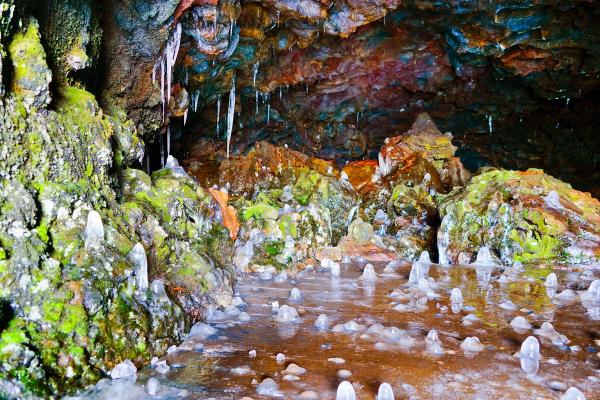
Arnarstapi and Hellnar
These two neighboring fishing villages are the best example of the human and cultural side of Snæfellsjökull National Park. They were once busy fishing hubs but are now quiet places, but a strong example of the deep connection between Iceland and the sea.
The cliffs of Arnarstapi are impressive, with the iconic Gatklettur, a natural stone arch, in front of them. There’s a 2.5-kilometer (1.5 miles) trail that connects both towns. It goes by the cliffs, passing seabird colonies and lava fields. Don’t miss out on the statue of Bárður Snæfellsás in Arnarstapi, at the beginning of the trail.
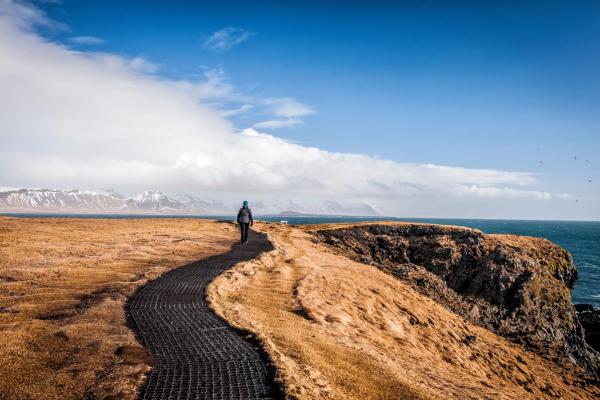
Rauðfeldsgjá Gorge
Not far from Arnarstapi, we can find Rauðfeldsgjá, a narrow gorge that cuts into a mountainside like a scar. The entrance is barely one meter wide, and it’s difficult to see from a distance, making it feel like a passage to a secret world. There’s a shallow stream that goes along the bottom, surrounded by rocky walls covered in green, mushy moss. At the end, a small chamber opens up, with a small waterfall pouring down on rocks.
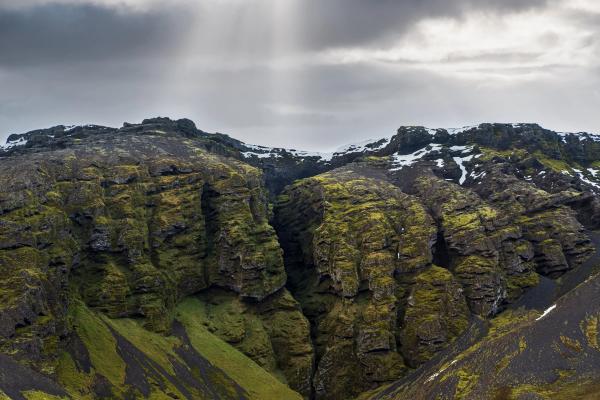
Búðakirkja
The black wooden church of Búðakirkja, built in 1848, stands alone in the middle of the Búðahraun lava field. It’s quite simple, but a great example of traditional Icelandic architecture. The contrast of the color of the church against the surrounding green fields is simply beautiful.
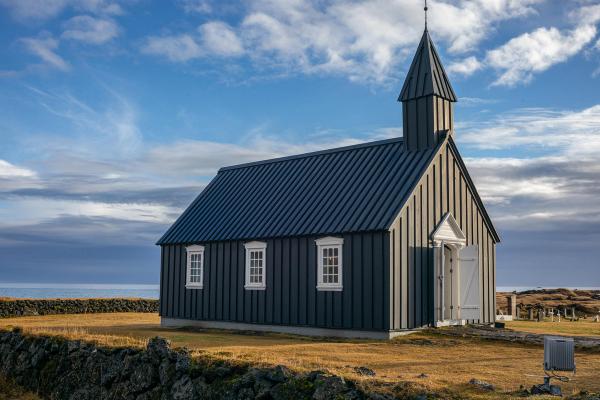
Kirkjufell Mountain
Just outside the park, near the town of Grundarfjörður, Kirkjufell, which means “mountain church,” is the most photographed mountain in Iceland. Rising 463 meters, its steep, arrowhead shape resembles a church’s steeple or a witch’s hat. It looks like it came out of a fantasy novel. In fact, it appeared in the TV show Game of Thrones. There’s an enchanting waterfall very close called Kirkjufellsfoss.
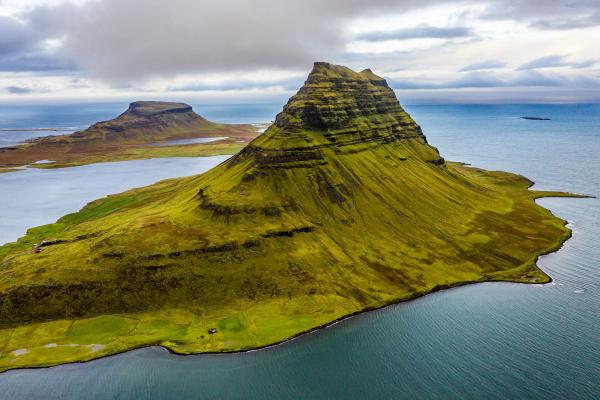
What to Do in Snæfellsjökull National Park and Nearby
Apart from the many natural monuments to see inside Snæfellsjökull National Park, there are also some thrilling activities to enjoy during your visit to the region.
Hiking
Snæfellsjökull National Park has a large network of trails. You will find that there are different difficulty and fitness levels. One, for instance, is the easy walk between Arnarstapi and Hellnar, with coastal views and many chances to spot seabirds. If you’re up for a more challenging experience, you can take on a glacier hike on Snæfellsjökull. It’s a hard climb, but it rewards you with breathtaking views.
You can always visit the Snæfellsjökull National Park visitor center in Malarrif to get information about the various hiking options, as well as the current trail conditions.
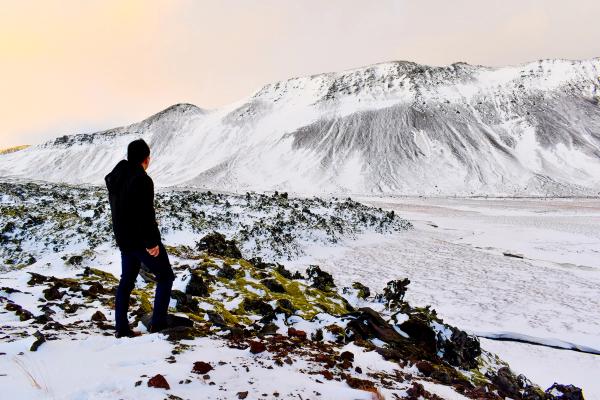
Whale Watching from Ólafsvík
Many travelers come to Iceland in hope to see whales, and there are great options inside Snæfellsjökull National Park. Ólafsvík, a fishing town on the north shore of the park, is one of the best spots in the country for this activity. Many companies operate boat tours from the town’s harbor to see orcas, humpback, and minke whales. Summer (May to September) offers calm seas and frequent sightings. Seeing a whale’s tail against the sea from up close is a memory that will last forever.
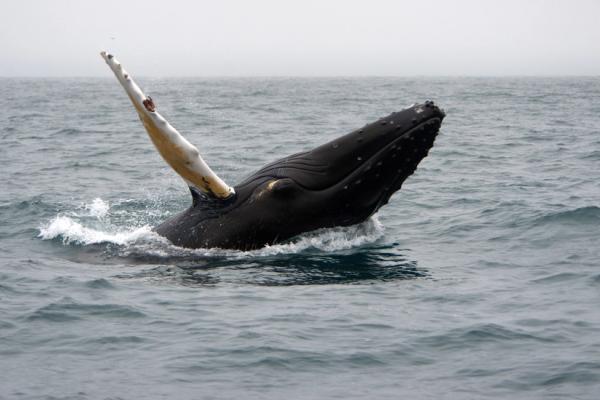
Bird Watching
The park’s cliffs are alive with seabirds, especially in summer. Arnarstapi and Lóndrangar give high chances of seeing puffins, kittiwakes, and guillemots. Most of these species come here during the summer months to nest. Bring binoculars to stay close to the action while keeping a respectful distance from the animals.
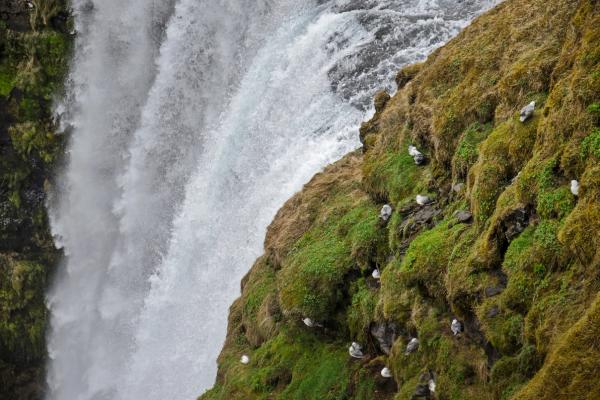
Seal Spotting at Ytri-Tunga Beach
This golden sand beach, something rare in Iceland, is located outside the park, but quite close to it. In fact, if you’re going to the park from the south, such as Reykjavik, you’ll pass very close to this place. Ytri-Tunga is home to one of the largest seal colonies in Iceland. Harbor seals are often seen there lounging on the rocks or swimming playfully, but there are chances to spot some grey seals, too. Keep 50 meters away to avoid disturbing them.

Photography
If you’re into photography, Snæfellsjökull National Park feels like your own personal outdoor studio. There’s something that deserves to be captured everywhere you look. The Snæfellsjökull serves as an amazing backdrop for your shots. Photography here isn’t just about snapping pictures—it’s about capturing the land’s spirit. Every angle tells a story.

Where to Stay in Snæfellsjökull National Park and Nearby
For a more relaxed visit, I'd recommend spending more than just one day in the area. In order to do that, you'll have to spend a few nights in the area. Luckily, the region features several campsites.
Hellissandur Camping Ground
Opening Period: April to September.
This camping ground, just outside the town of Hellissandur, is by the beautiful Sandahraun lava field. It has facilities in good condition, such as showers, toilets, electricity, Wi-Fi, a swimming pool, and a playground for children. Its location, close to the park’s northern trails and the colorful street art of the town of Rif, nearby, makes it a great base.

Ólafsvík Camping Ground
Opening Period: June to August.
Just outside Ólafsvík, this campsite is close to the town’s harbor, from where the whale watching tours depart. Its proximity to the center gives access to shops, restaurants, and other services. It features grassy pitches for tents and campervans, as well as showers, toilets, Wi-Fi, electricity, and a playground for children.
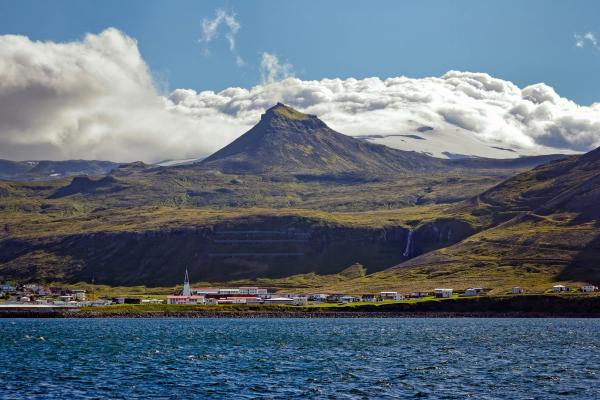
Arnarstapi Campsite
Opening Period: May to September.
Arnarstapi Campsite, near the village’s iconic cliffs, has a beautiful setting, close to the town’s center and with the Snæfellsjökull glacier in the back. The campground has showers, toilets, Wi-Fi, electricity hookups, and a sink for washing dishes. It also features 13 cottages suitable for two adults and a child, perfect for a cozier stay, and they offer free Wi-Fi. It’s not very big, so it’s better to book in advance, especially during peak season.
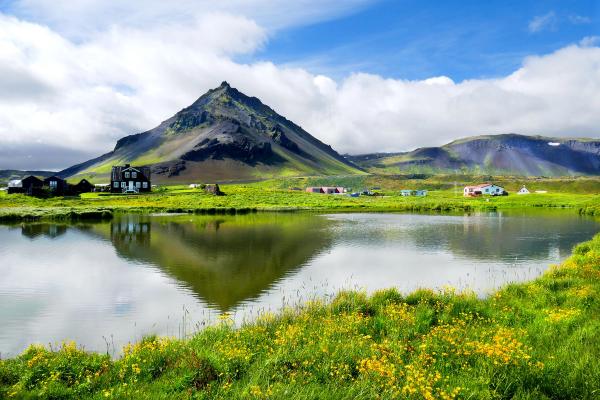
Grundarfjörður Campsite
Opening Period: All year, but with reduced services in winter.
This campground is located in Grundarfjörður, the closest town to the iconic Kirkjufell. It’s a simple but well-maintained campsite, with toilets, showers, a kitchen, and electricity hookups. The town’s restaurants, supermarket, gas station, and swimming pool are just a couple of minutes away on foot.
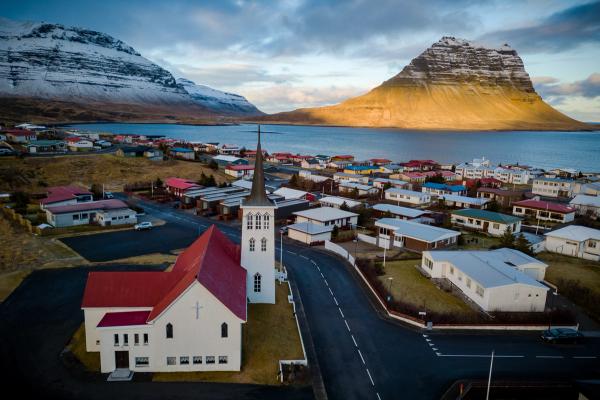
Stykkishólmur Campsite
Opening Period: May to October.
Of the five campsites listed here, this one is the farthest away from the national park, but it's still less than an hour's drive away in your campervan. It’s quite big, with pitches for tents and campervans, as well as facilities such as toilets, showers, electricity, and a washing machine. There’s even a 9-hole golf course next door where you can rent clubs.
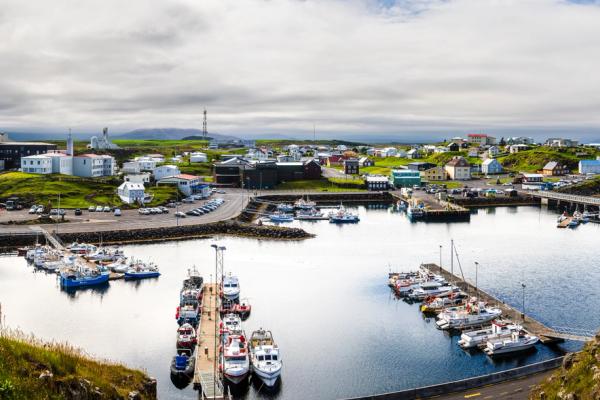
Where’s Snæfellsjökull National Park and How to Get There
As we have mentioned a couple of times before, Snæfellsjökull National Park sits at the western tip of the Snæfellsnes Peninsula in West Iceland. There are several entry points, but it’s roughly 200 kilometers (124 miles) from Reykjavik.
The best way to get there is by renting a campervan. This way, you’ll have the freedom to create an itinerary that suits your pace, stopping along the way and then sleeping on one of the many camping grounds we have listed above.
To reach the park from the capital, start by taking the Ring Road (Route 1) heading north. Just after you’ve passed the city of Borgarnes, turn left onto Route 54, which leads and loops around Snæfellsnes Peninsula. Drive on it for 100 kilometers (62 miles) and then take Route 574, which connects key sites like Malarrif and Djúpalónssandur.
All the roads are paved and in good condition, but drive with care in winter. There are not many gas stations inside the park, so fuel up beforehand, in places like Borgarnes or Grundarfjörður.
The Weather at Snæfellsjökull National Park
In the Snæfellsnes Peninsula, the weather is not as cold as in other parts of the country. However, its location, exposed to the sea, makes it wetter and windier than other regions. And not only that, the weather changes constantly, and you can experience different seasons within one day.
Spring (April and May)
After the harsh winter, spring brings temperatures of 0–7°C (32–45°F), accompanied by rain and wind. There’s still snow covering some parts of the park, especially in the first weeks. The days lengthen week after week, giving more time to explore all the corners of the park.
Summer (June to August)
This is, objectively, the best season in terms of weather. The temperatures are mild, averaging between 8 and 15°C (46–59°F). By the end of June, the sun barely sets, creating the perfect atmosphere for glacier hikes and photography. There are always chances of a sudden shower, and wind gusts can be strong, but the weather is mostly favorable. On the other hand, it’s peak season, so the park is at its busiest.
Autumn (September and October)
In autumn, the temperature goes down gradually, moving around 2–10°C (36–50°F). The fields get beautiful changing colors, but storms can roll in suddenly. The first days of snow can arrive by mid-October, but it’s the season when the Northern Lights begin to be visible.
Winter (November to March)
Winters are not easy in Iceland, and Snæfellsjökull National Park is no exception. The temperature is usually between -5 and 3°C (23–37°F), and the snow covers the park. It’s a beautiful image, but navigating roads can be challenging. Some even close if the weather is too adverse. Not many campsites are open, so you need to plan your trip carefully.
Travel Tips
- Book Campsites in Advance: Some of the camping grounds in the region are small and quite busy in summer. You can use the app Parka to reserve a spot, as walk-ins can be risky.
- Pack for All Seasons: As the weather changes so much, it’s essential to be prepared for everything. Bring waterproof jackets, hiking boots, and warm layers. Check the weather forecast to be one step ahead.
- Protect the Land: Snæfellsjökull National Park is a natural jewel, and we all need to play our part to keep it in the best condition. Follow the rules, don’t wander off marked trails, and take all your trash with you.
- Stay Connected: Please note that some areas within the park may have a weak or no phone signal. Download offline maps or grab a paper map. Using a GPS device could be a great idea.
- Stock Up: There are shops and gas stations only in certain towns, so fill up your tank and buy what you need before going inside the park.
- Book Tours Ahead: Glacier hikes and tours to places like Vatnshellir fill fast. Reserve online to secure a spot.
- No Wild Camping: It’s illegal in Iceland. Stick to campsites to avoid fines and protect the fragile ecosystem.
- Drive Safely: The roads can be affected by the weather. Check the road conditions before departing and adjust your route if necessary.
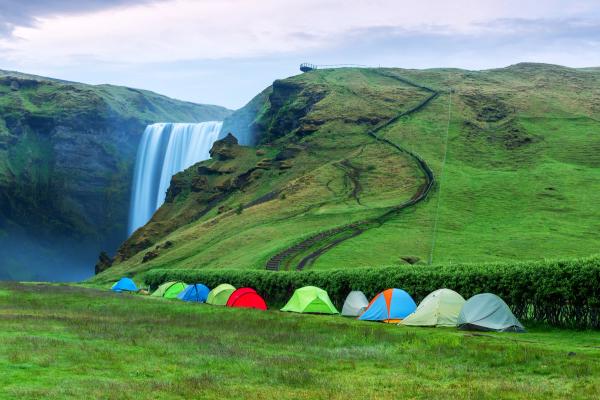
Conclusion
There are not many places that pack so much in such a small area. Snæfellsjökull National Park has a bit of the best Iceland has to offer, and it’s waiting for you to discover it. It’s the perfect place to feel a connection with a land that is utterly surprising and unique. Rent your campervan, choose where to sleep, and get ready for an experience that will stay with you forever.

